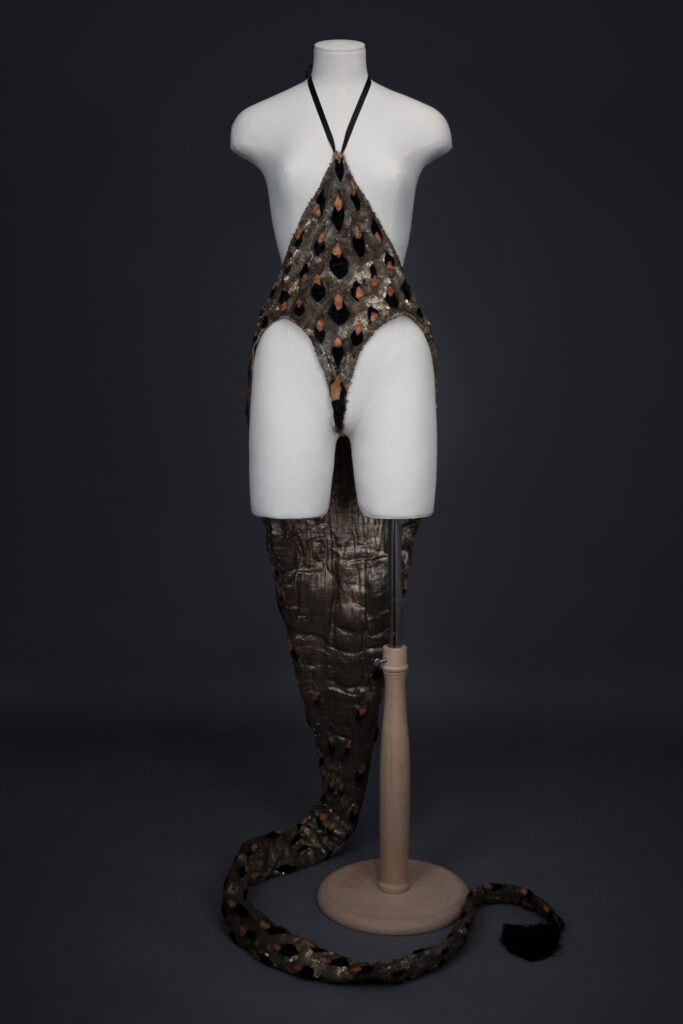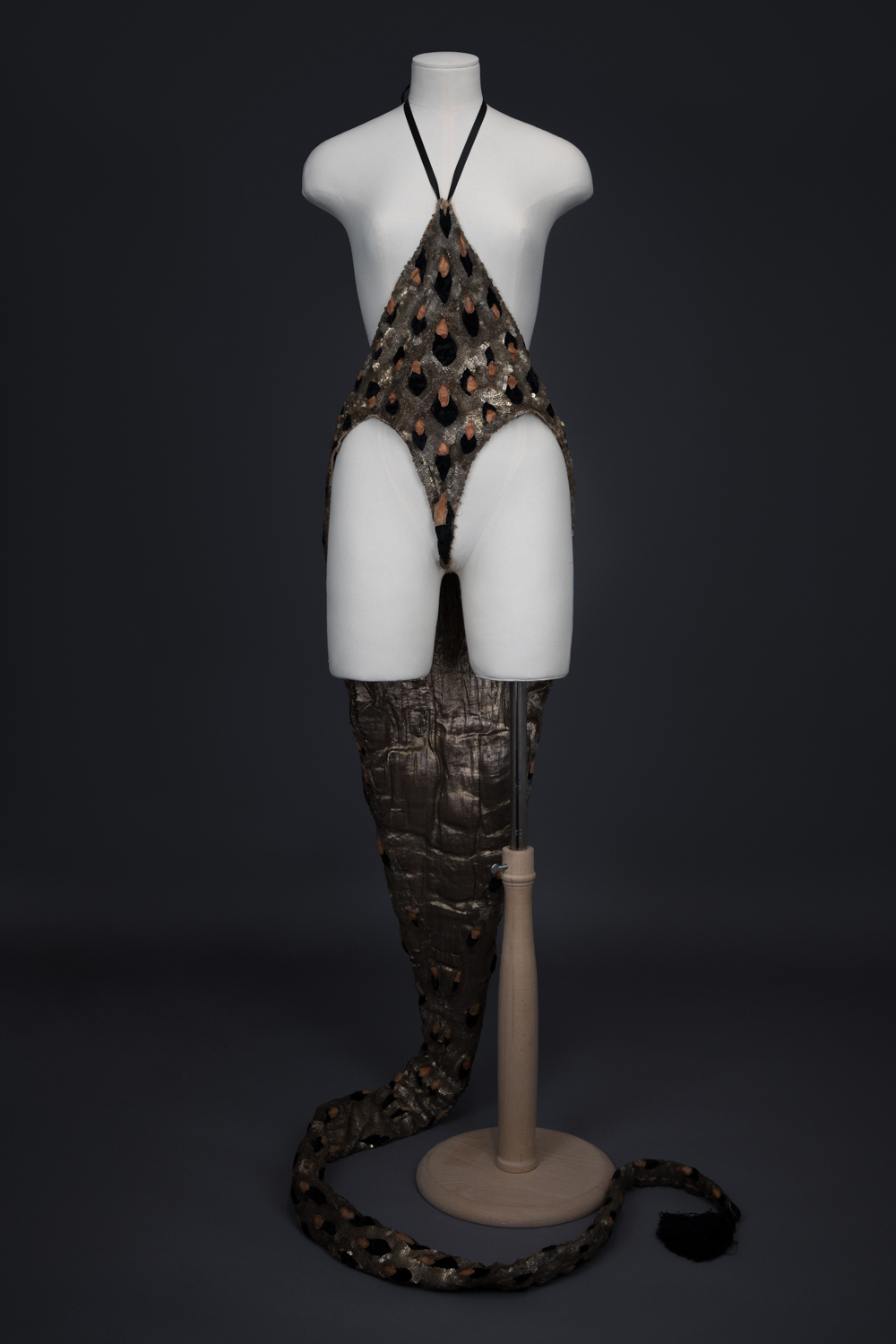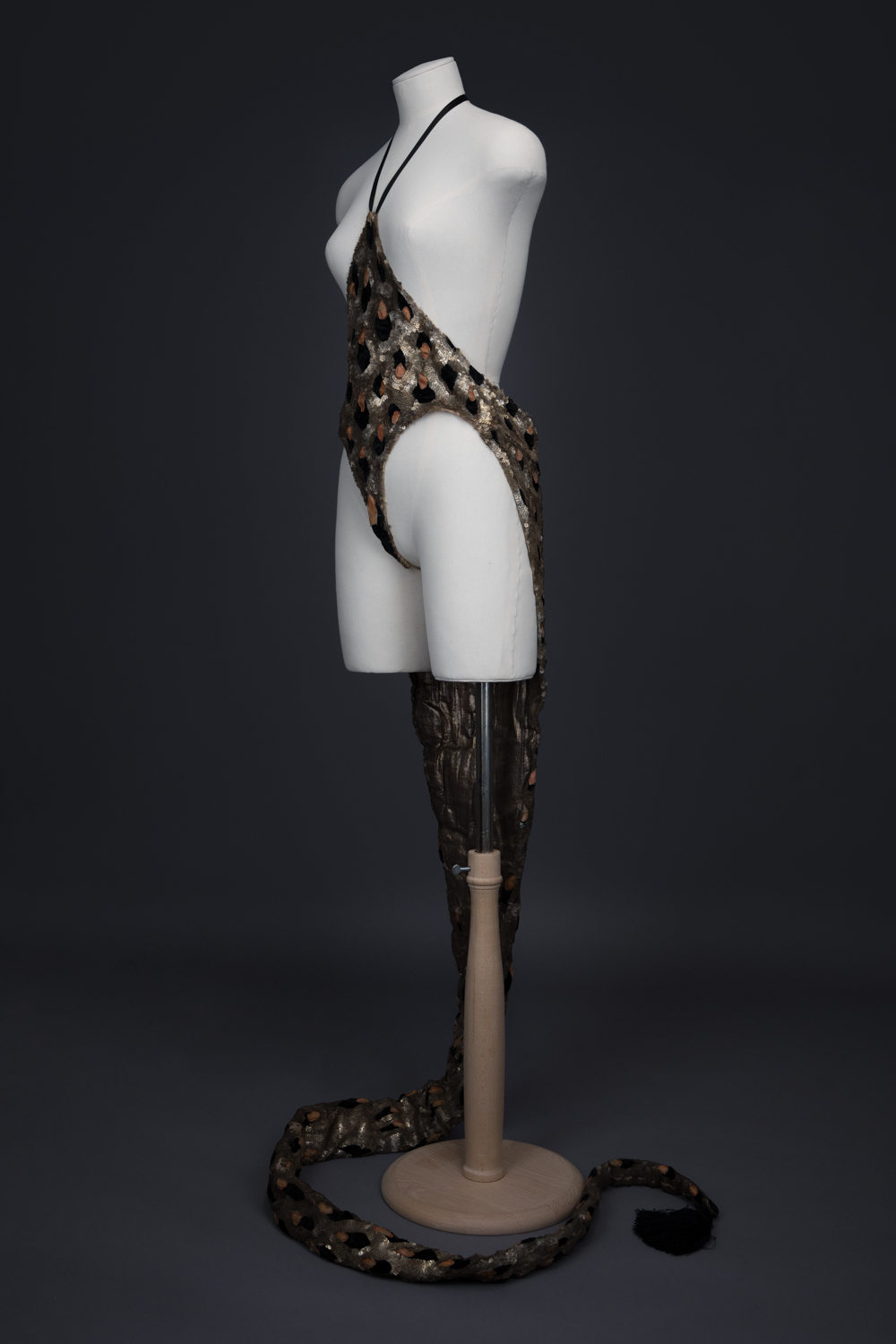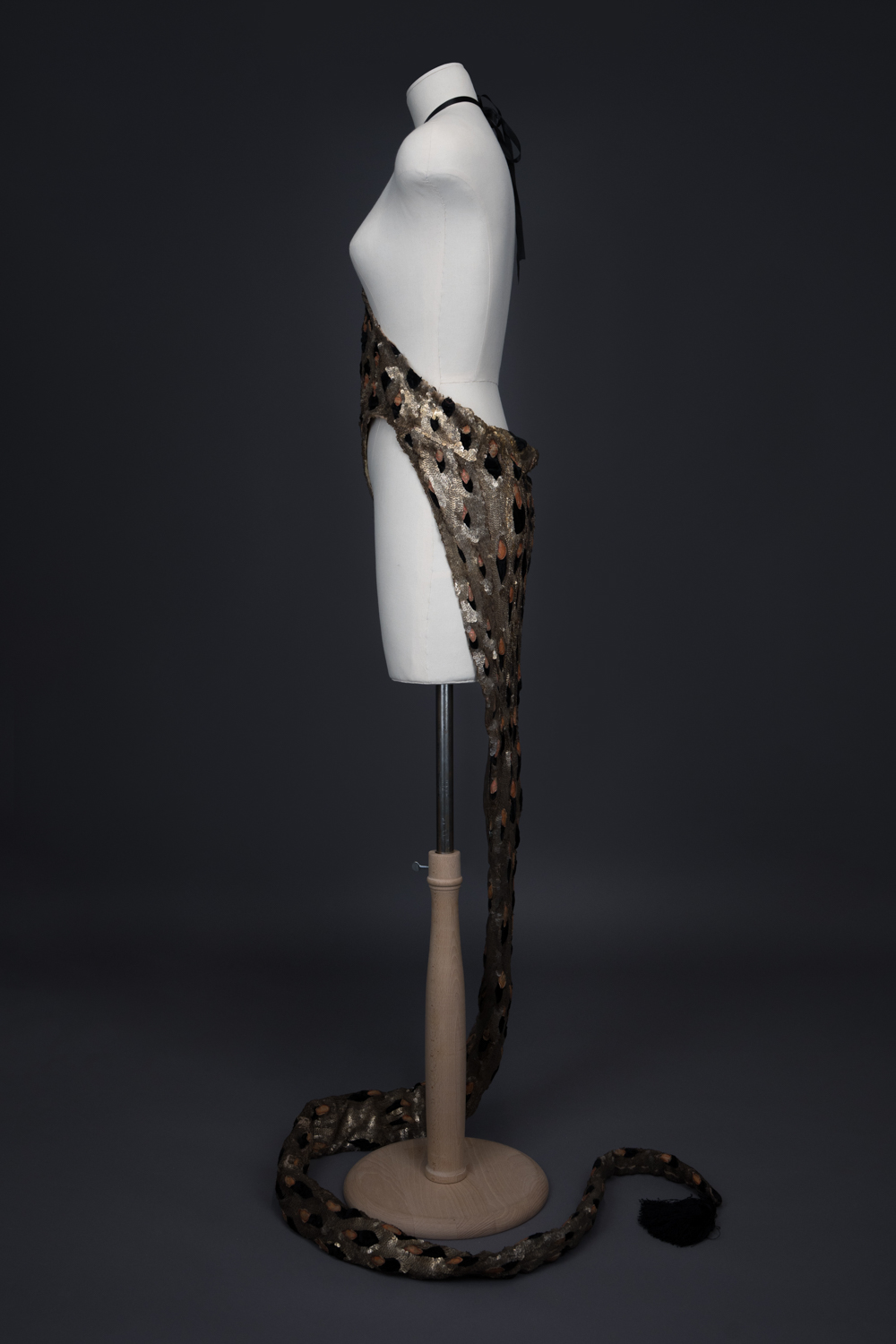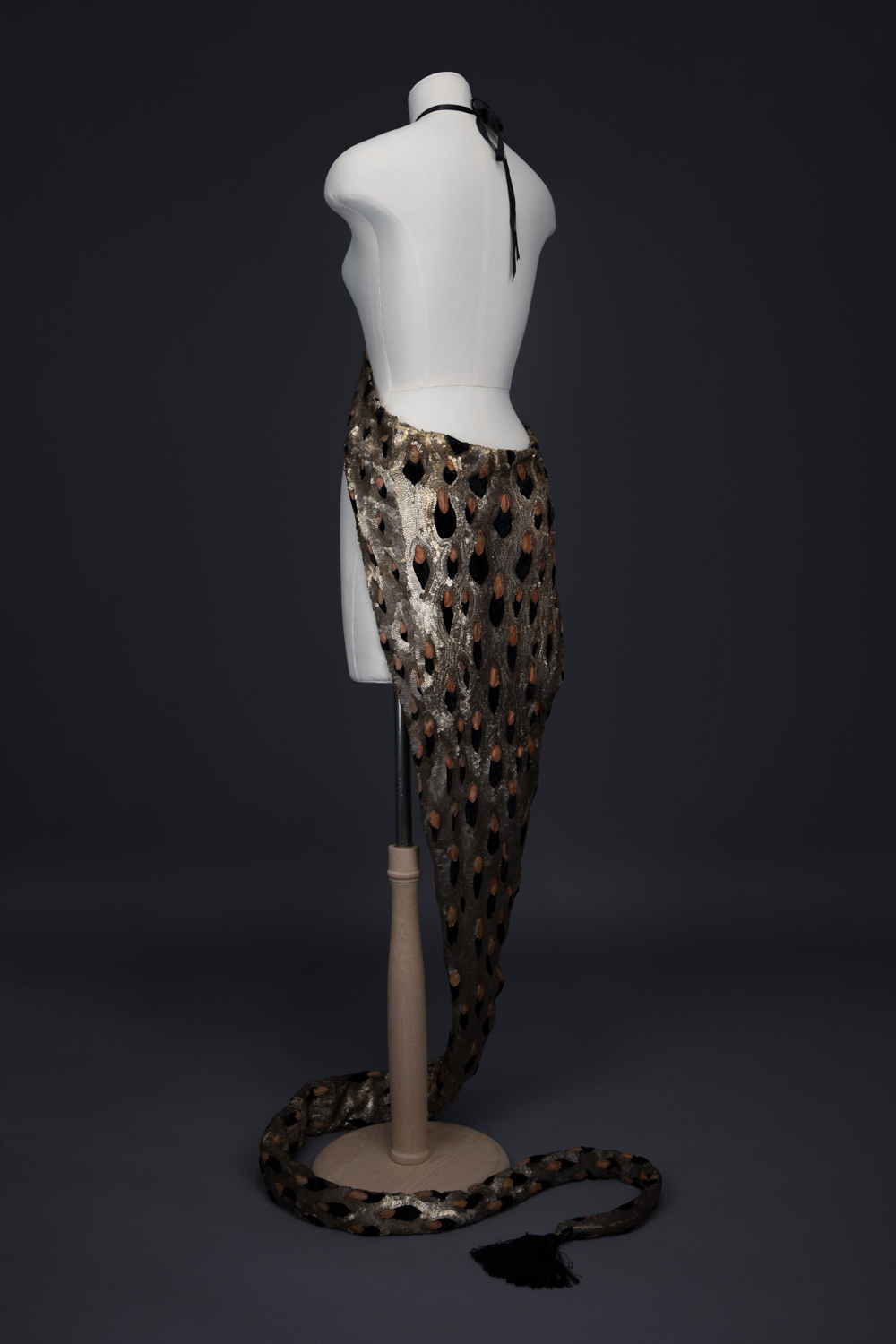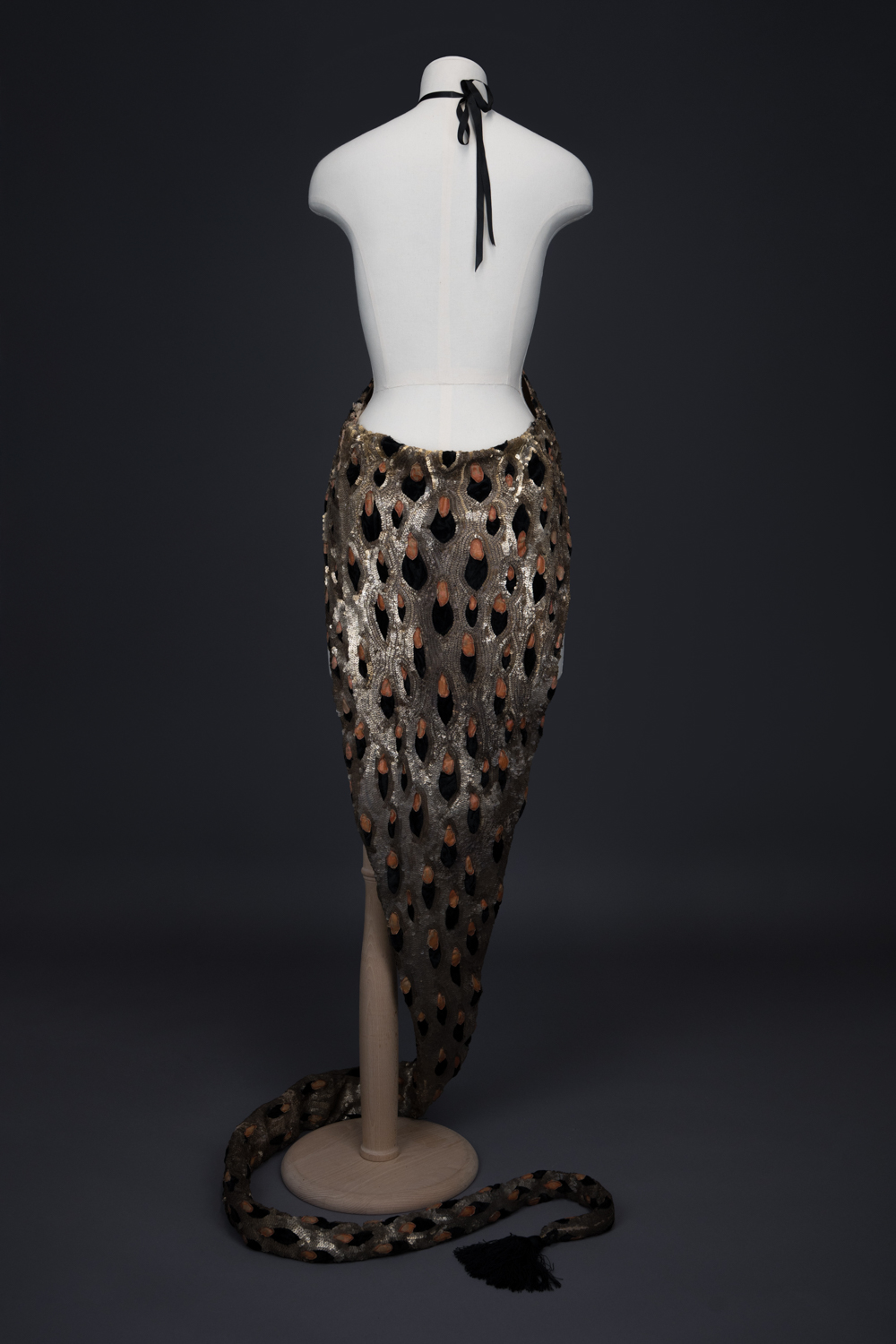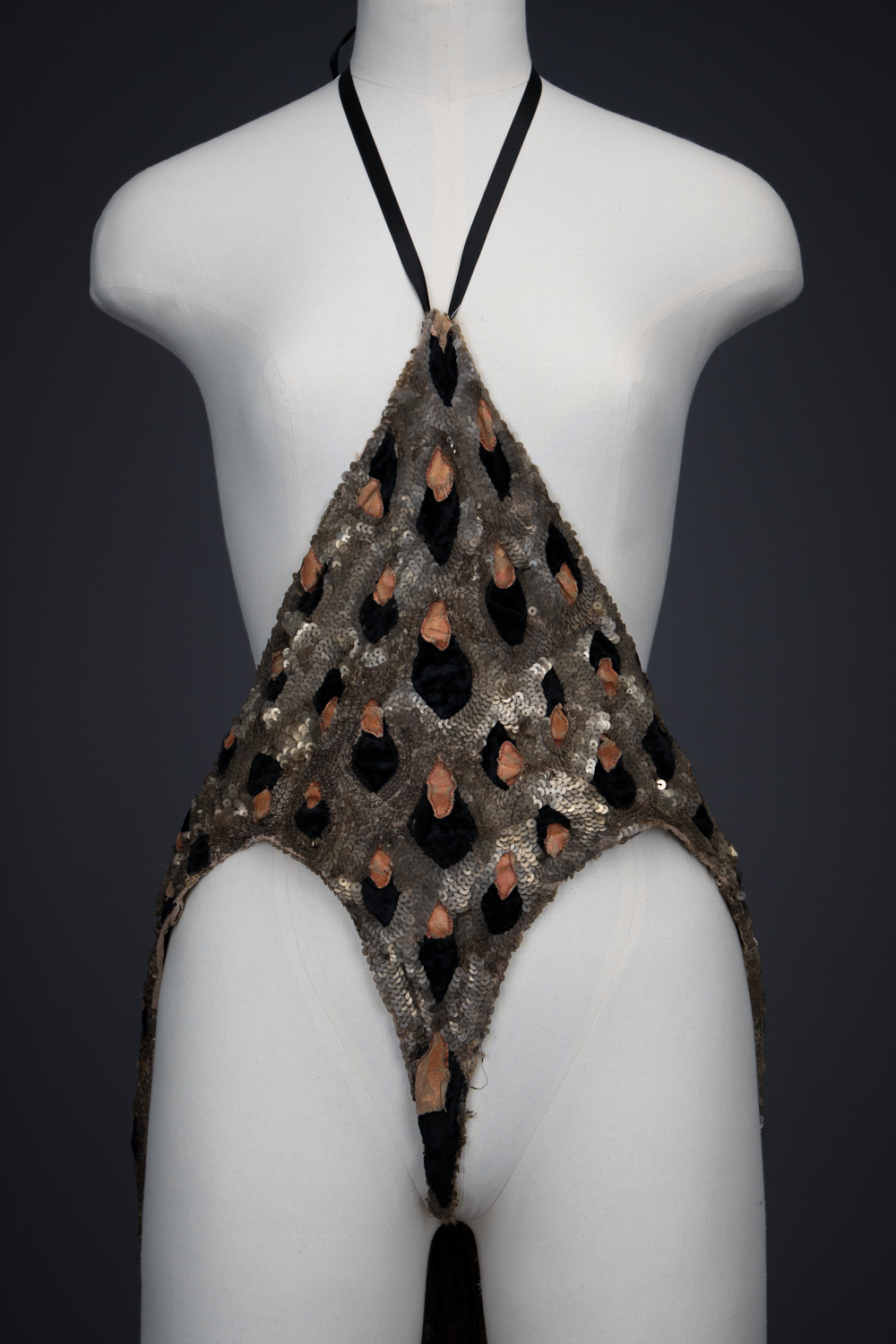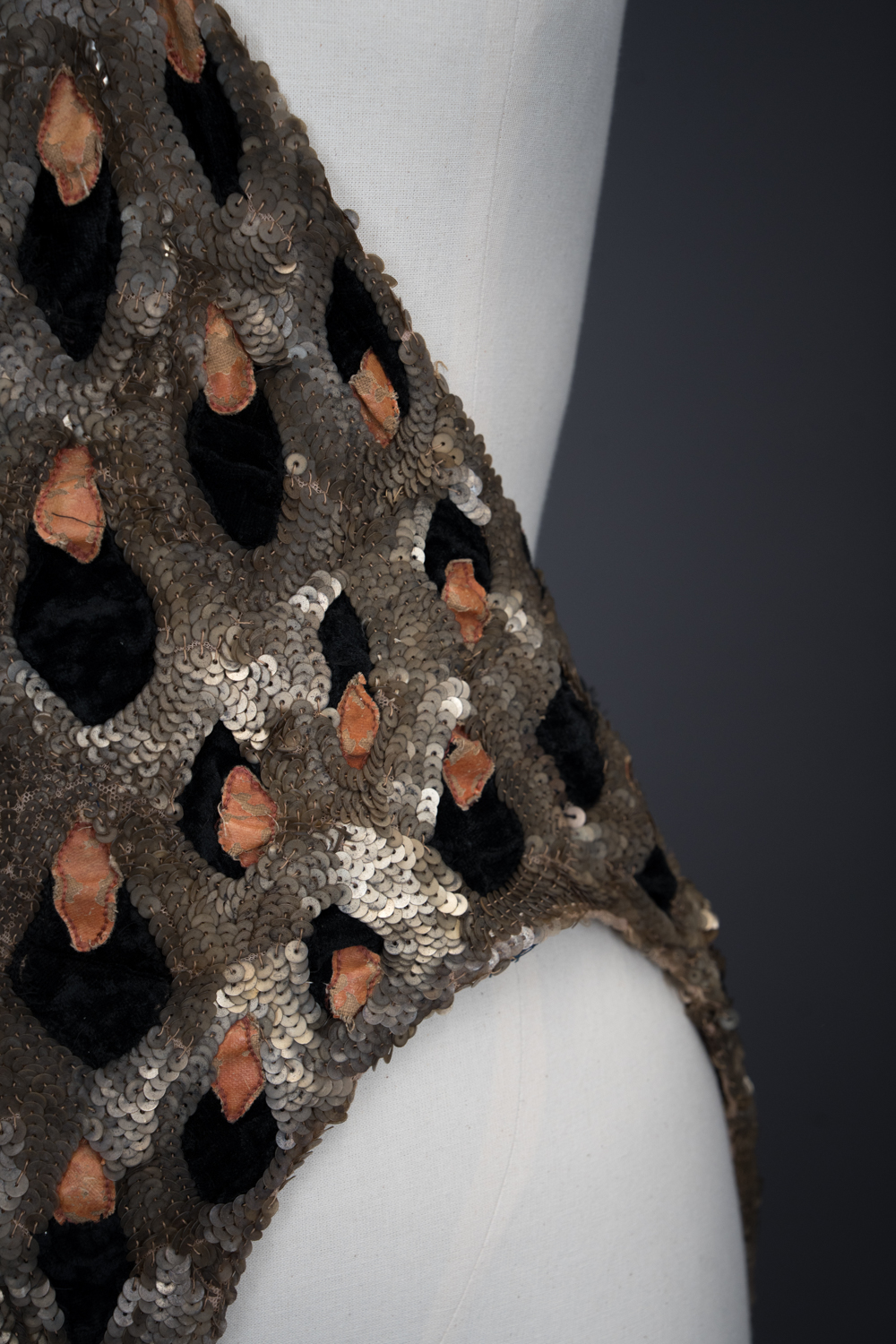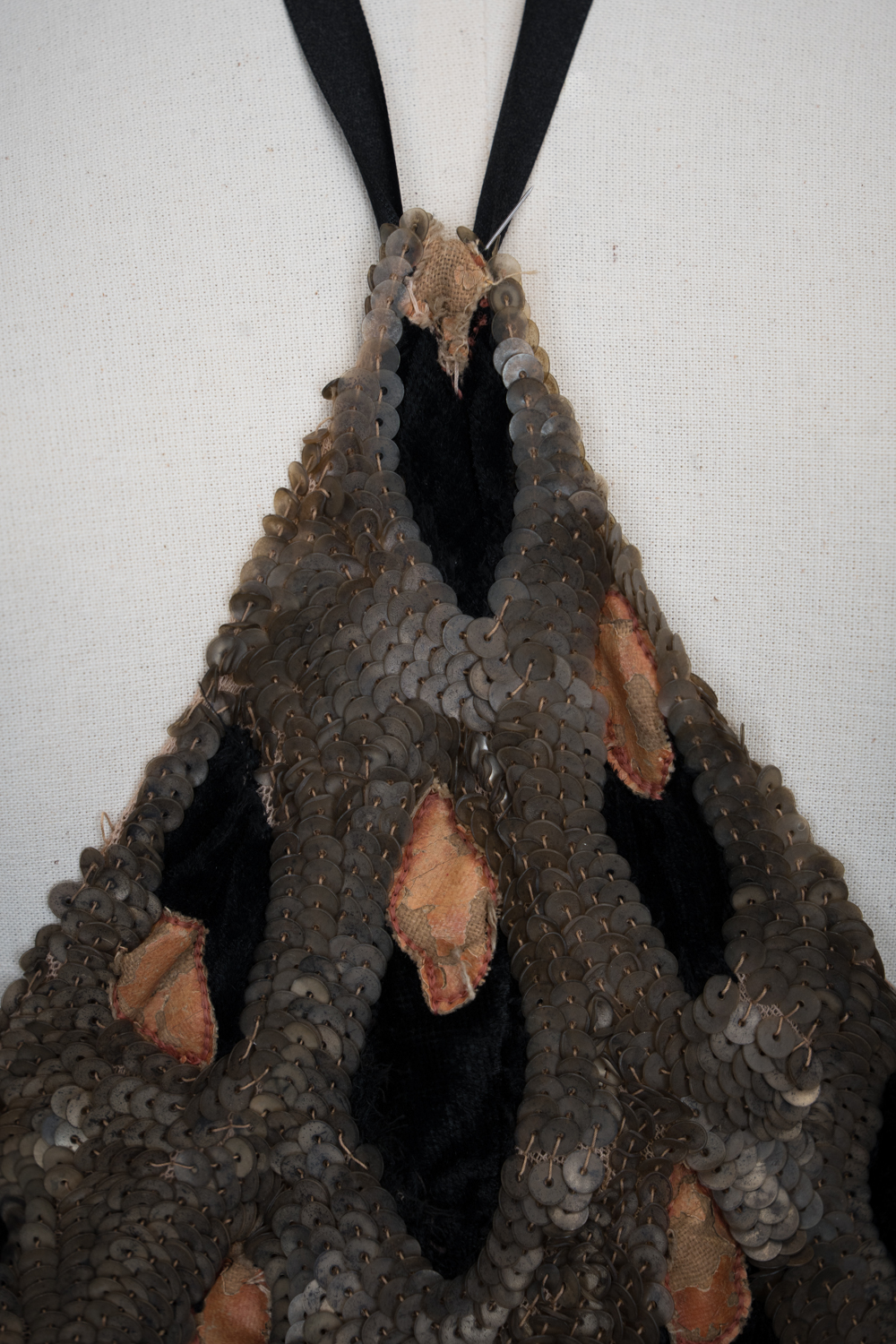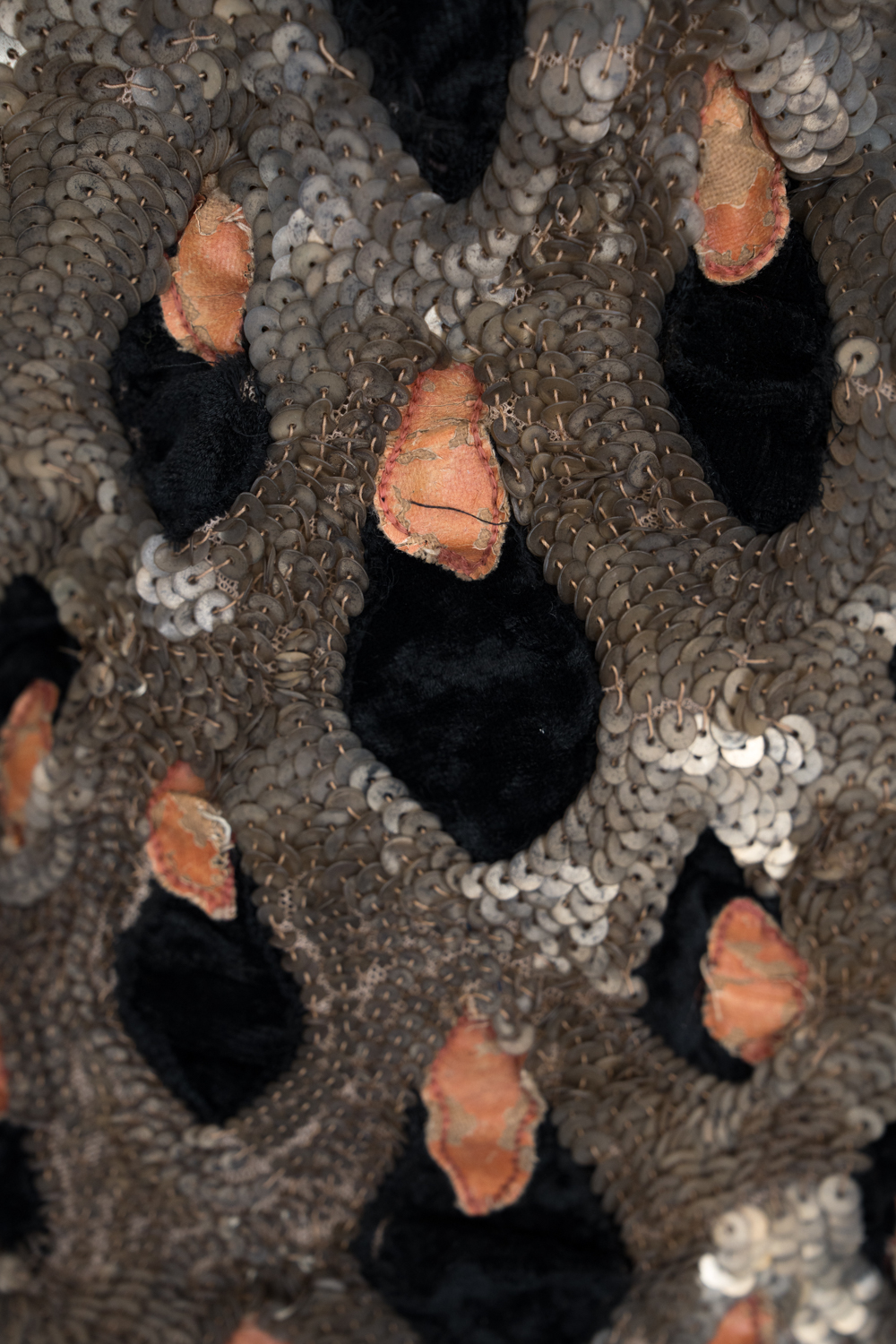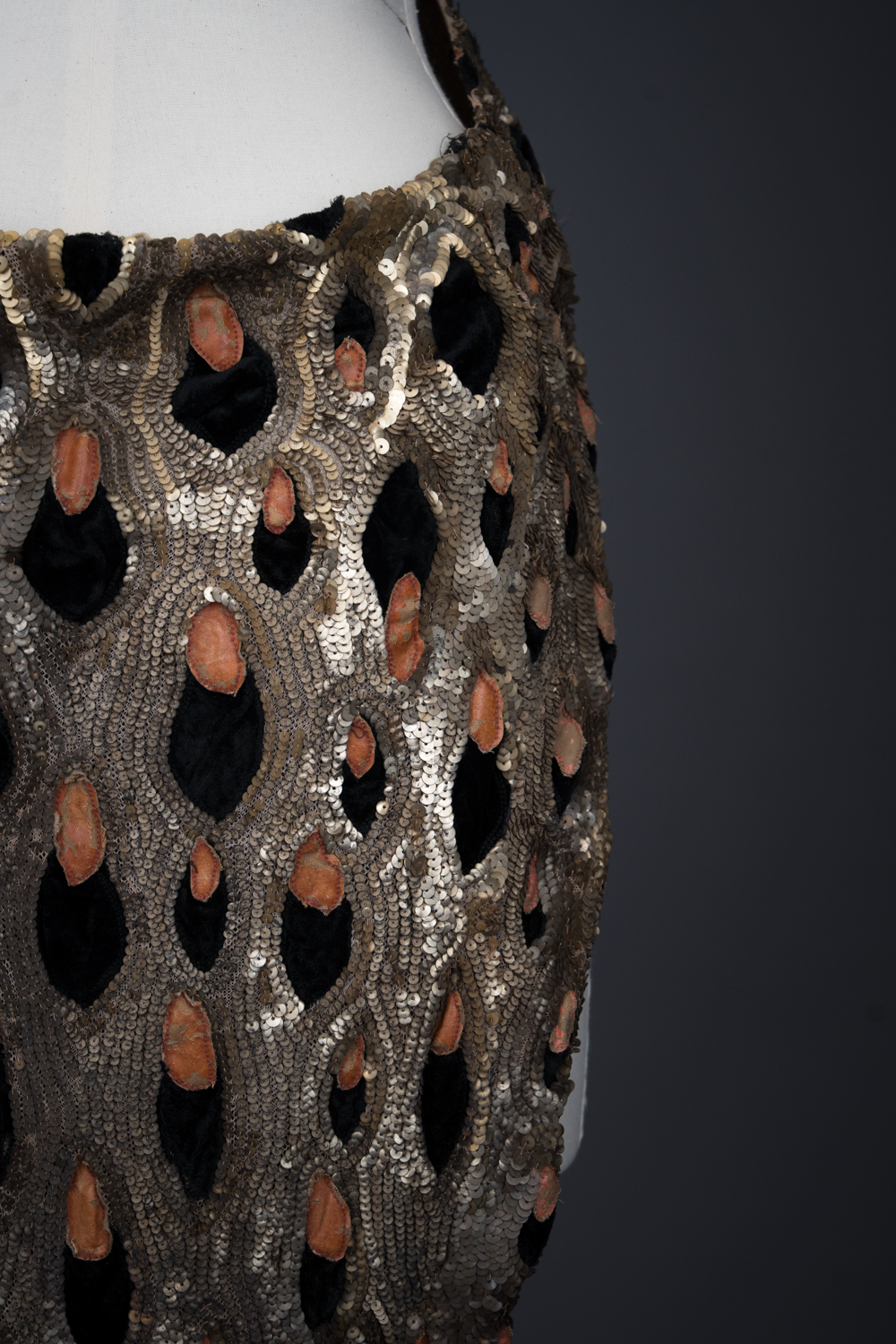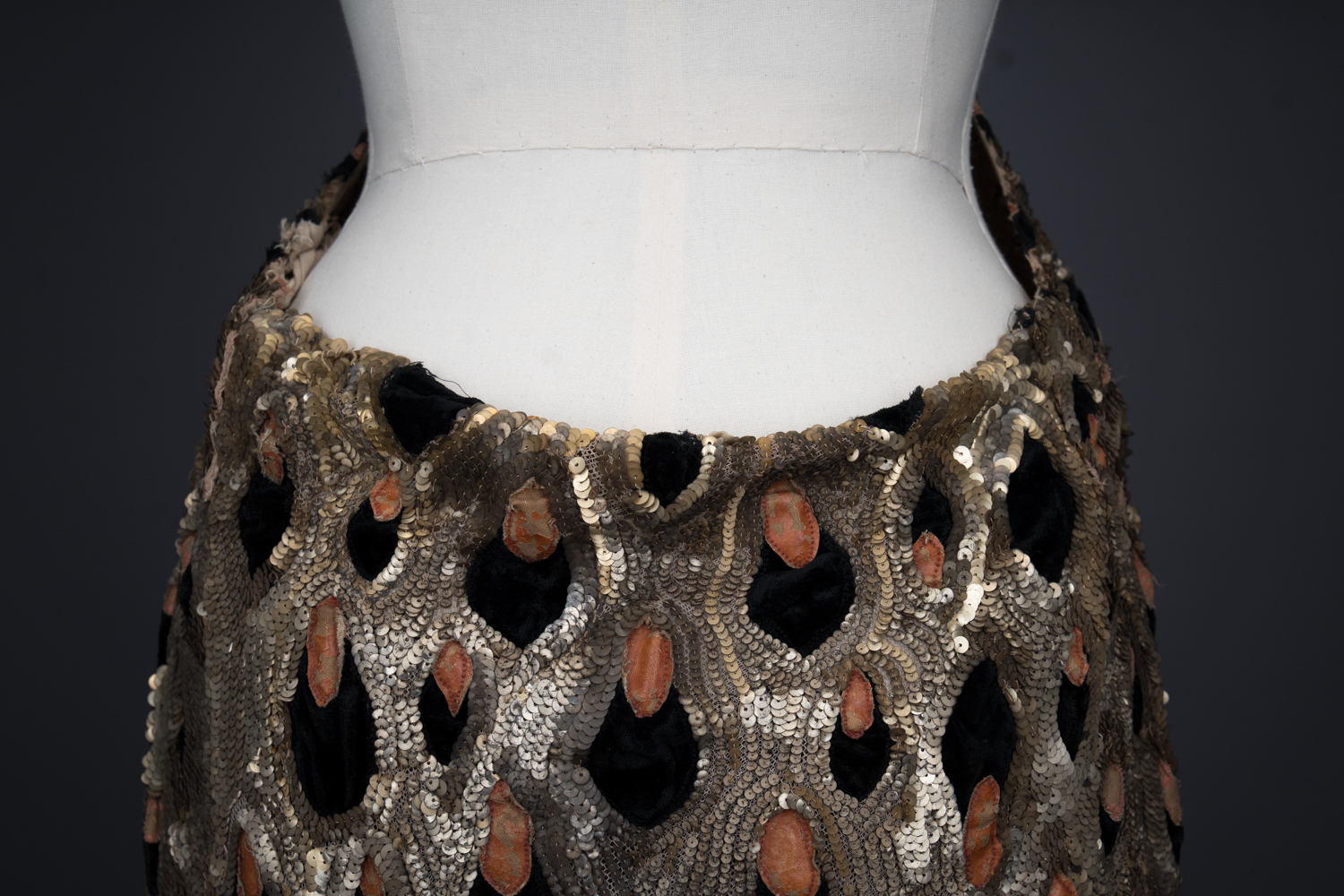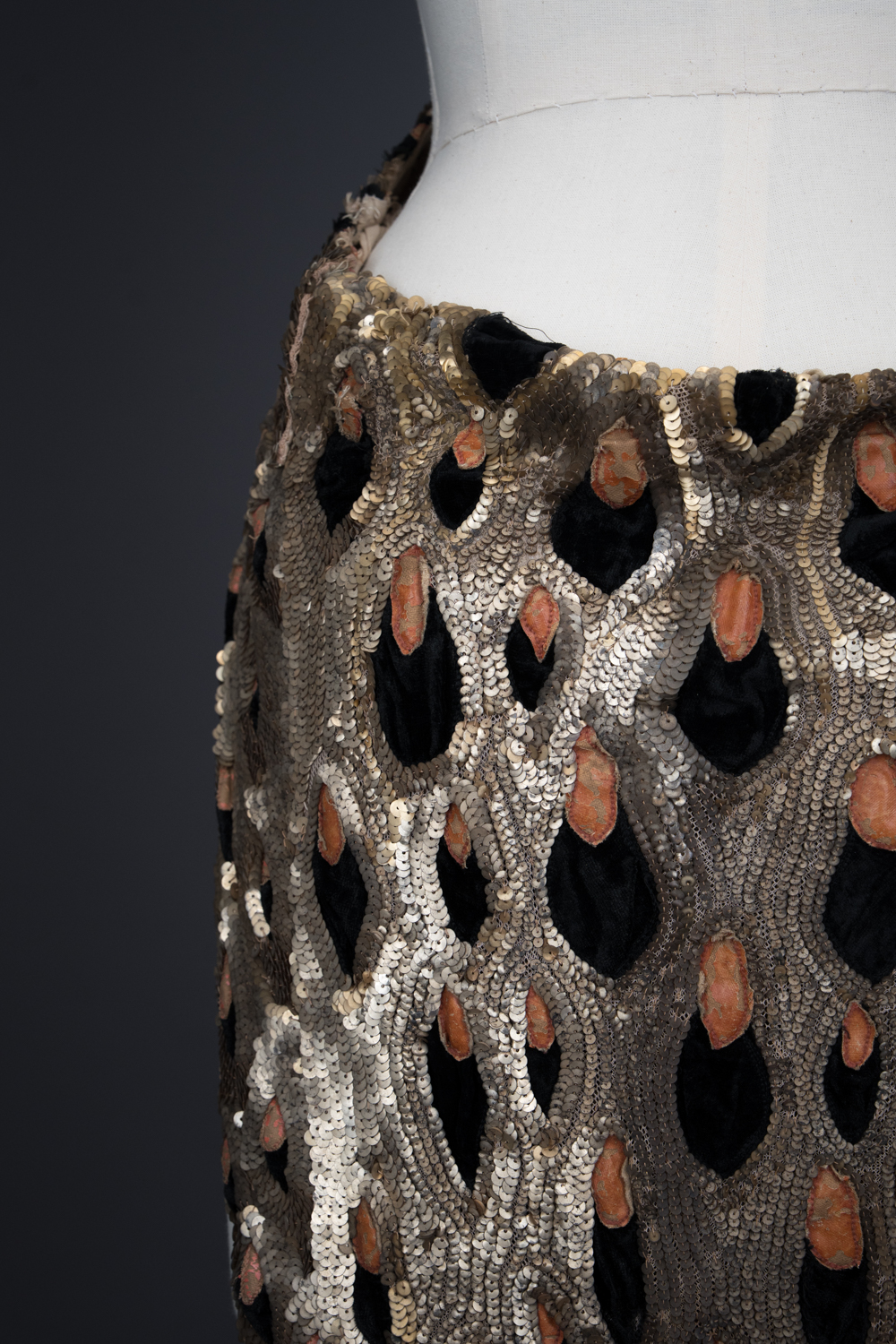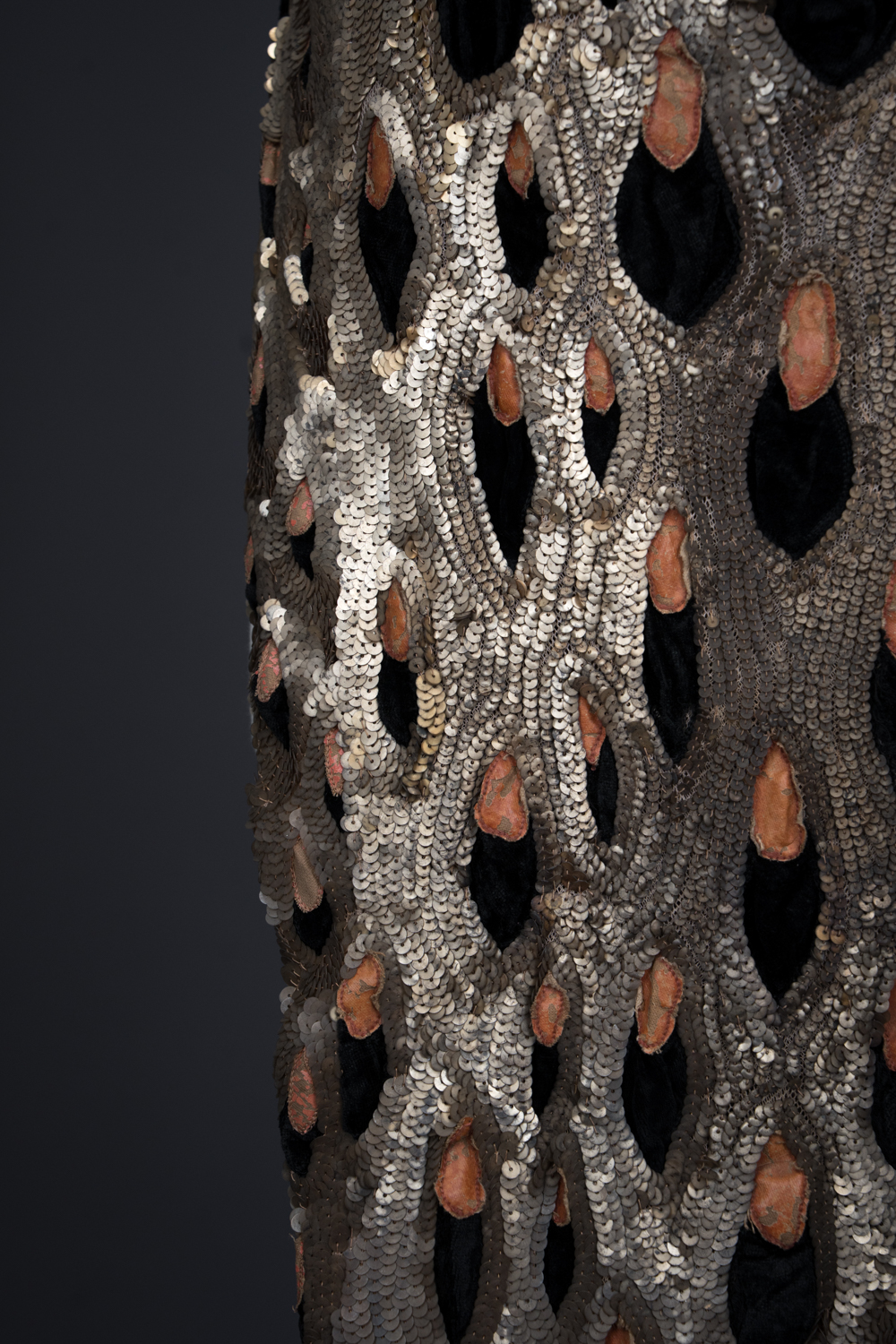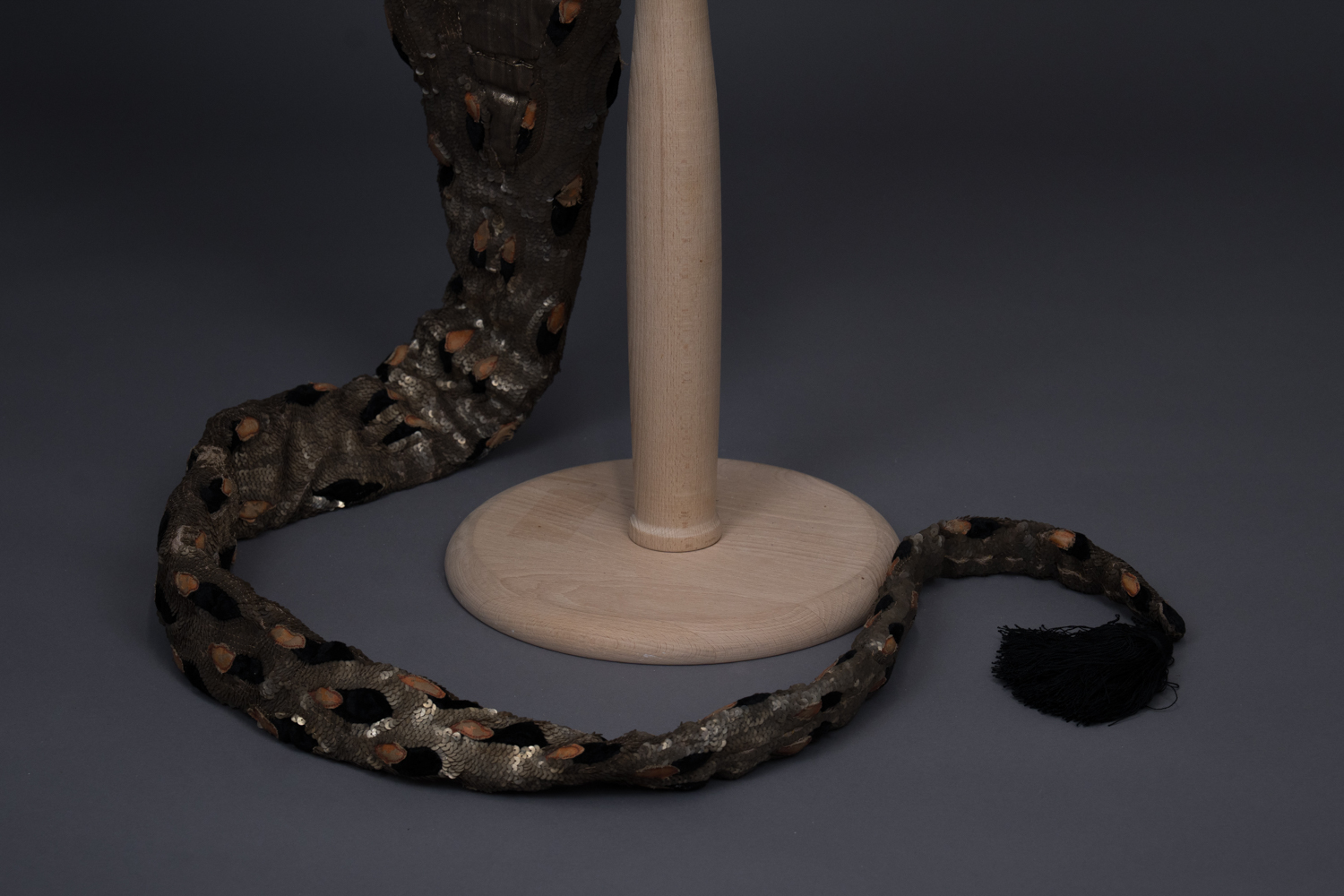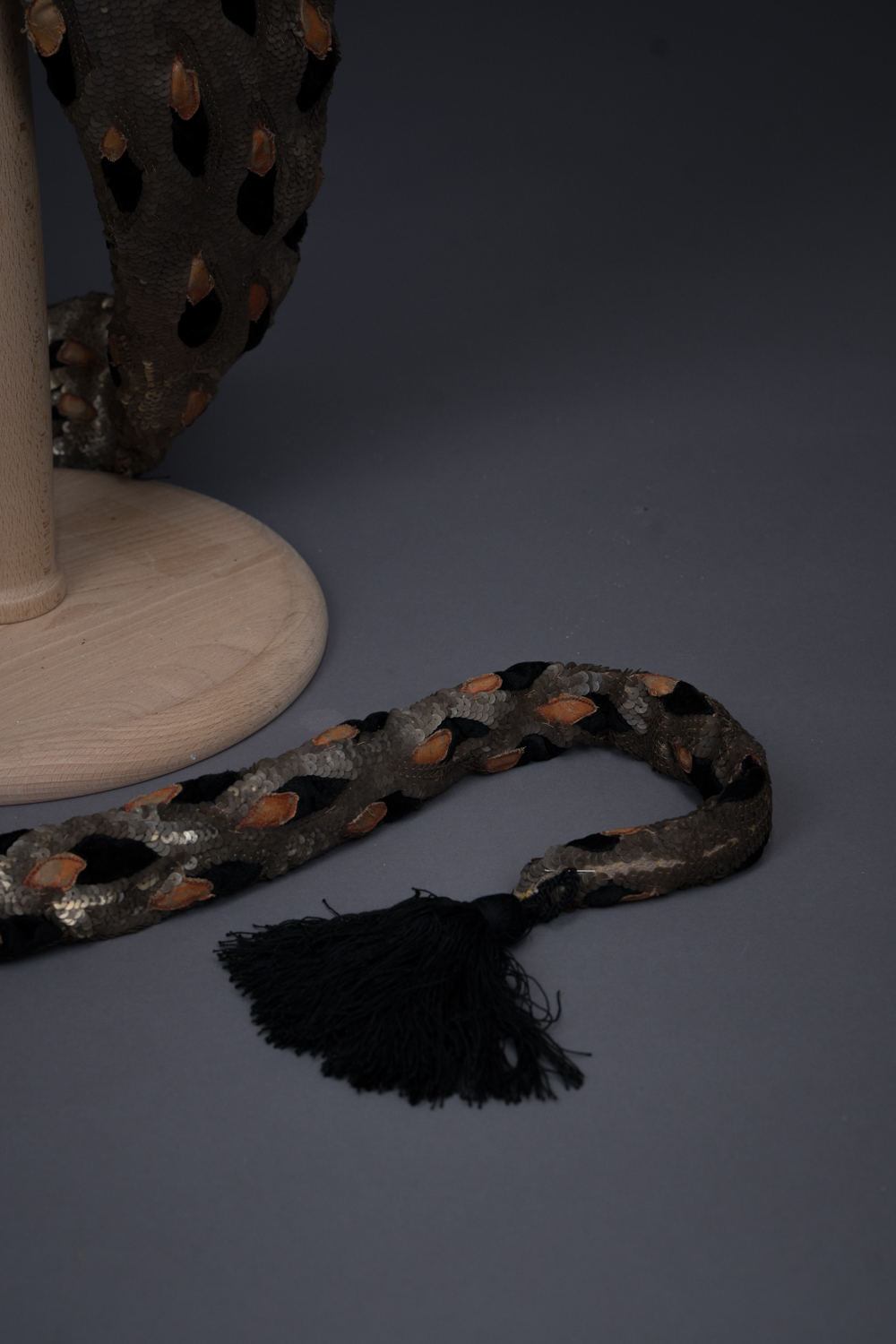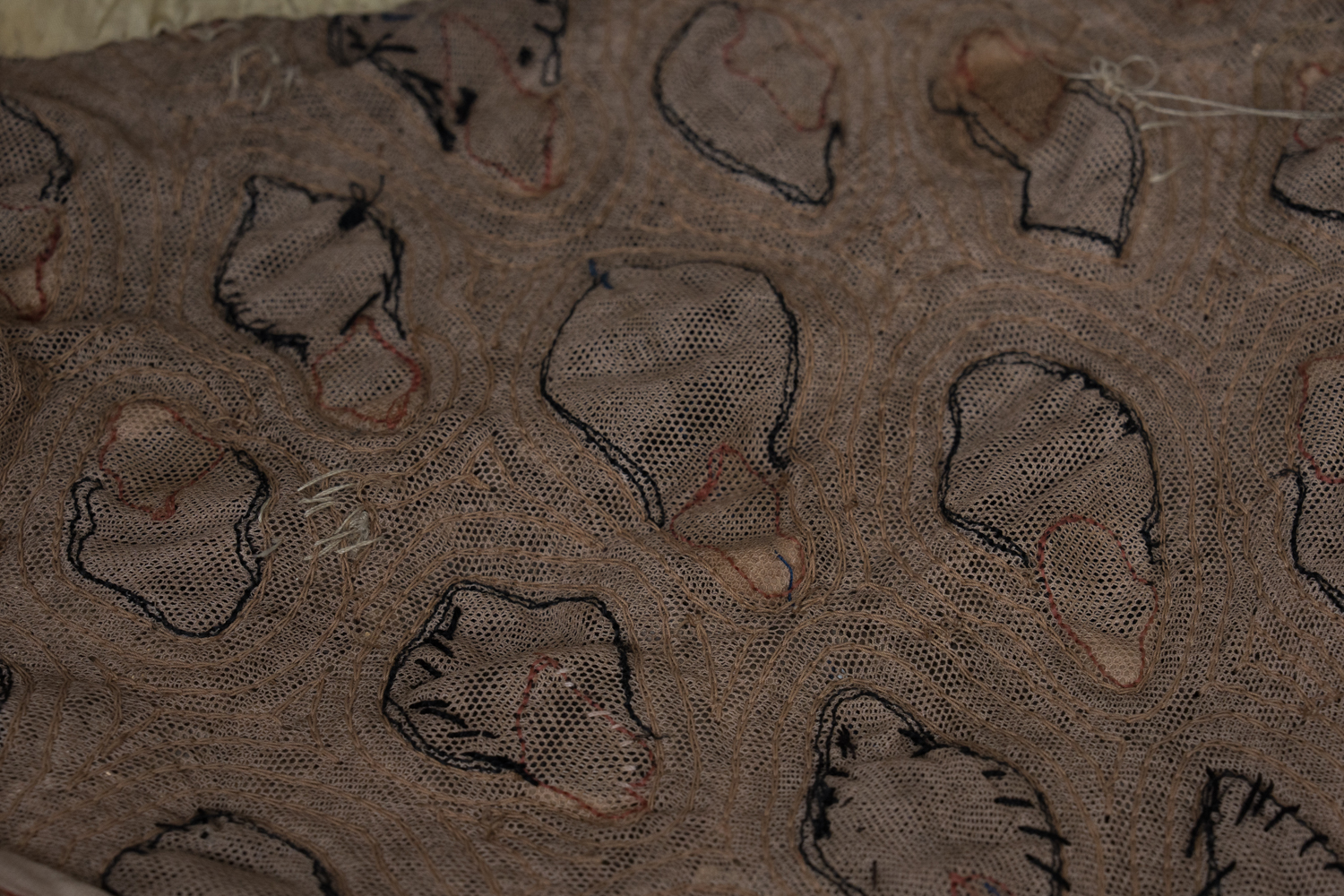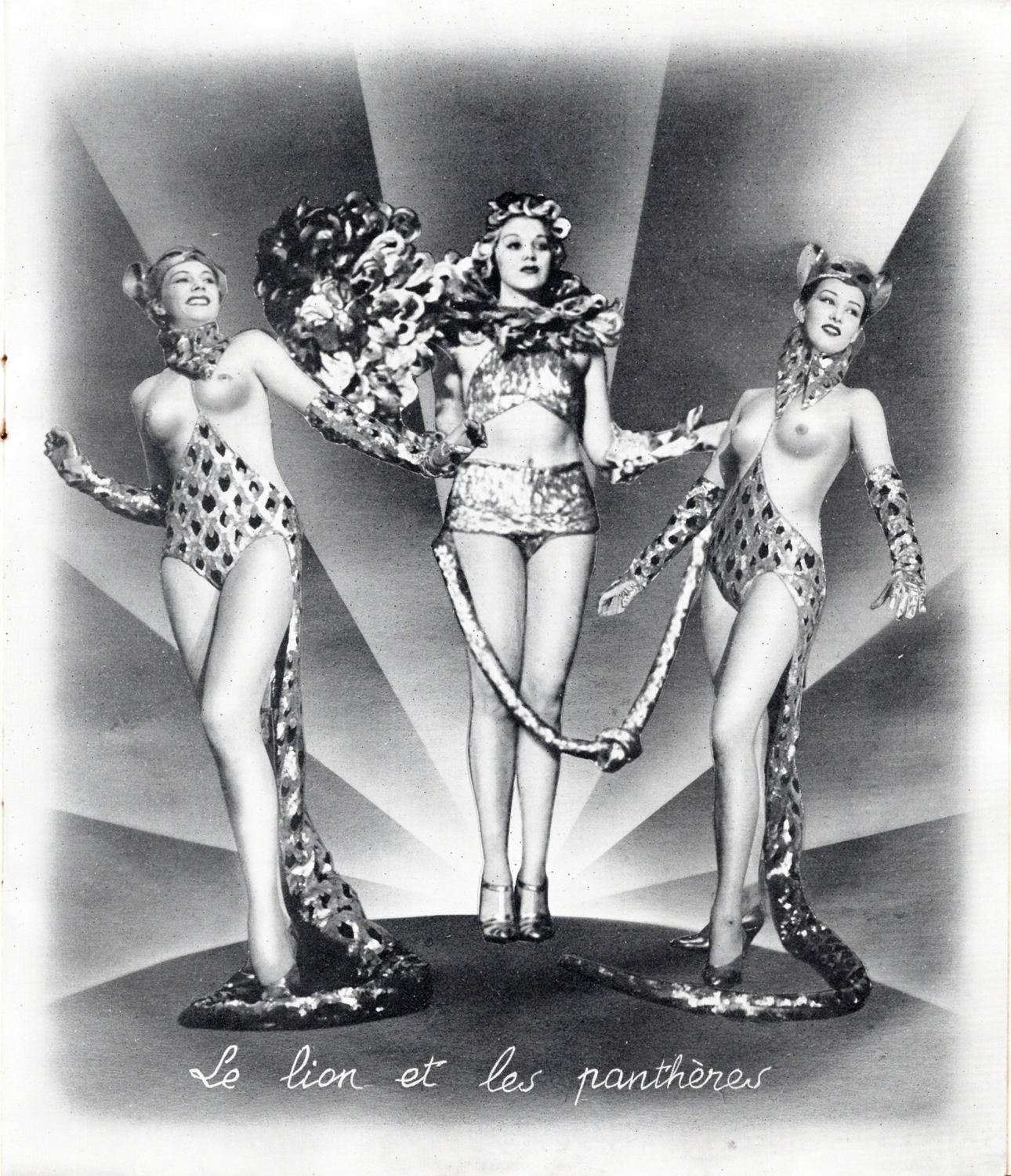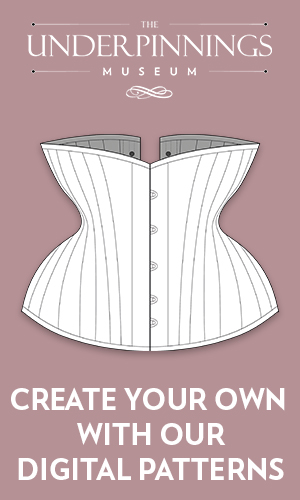Date: c. 1939
Origin: France
Fabric: Cotton bobbinet, rayon satin, silk lamé, silk velvet, painted canvas, metal and gelatin sequins
Brand: Erté
This halterneck bodysuit has an exposed bust, thong cut and an extended train that finishes as a tail. The base fabric is a double layer of cotton bobbinet tulle, which has been profusely embellished with silk velvet and painted cotton canvas appliqués, and rows of metal and gelatin sequins. The embellishment is applied with a machine chainstitch. The gusset is lined with a piece of yellow rayon satin. The surface embellishment continues onto a lavish train, which is lined with a metal silk lamé. This is now somewhat tarnished, but would have appeared much smoother and brighter when the garment was first made. The train is finished with a tail, which is stuffed with cotton batting to give it structure and weight.
Although the bulk of the sequins on this piece are made of metal, there are a few ‘filler’ areas towards the back of the garment where gelatin was used. Gelatin sequins are soluble in water, and there are a number of areas where the sequins have begun to dissolve into the cotton tulle base layer. The knicker legs used to be partially elasticated with cord elastic, but this has now perished and no longer has any stretch. The paint on the canvas appliqués is damaged and lifting in many areas, revealing the woven canvas base beneath.
There are two major alterations that were undertaken on this costume at a later date. Most noticeably, the halter of the costume has been replaced with a synthetic, polyester satin ribbon tie. Secondly, a tassel has been added to the end of the costume’s tail, which was not present in the original design.
This costume was designed by Romain de Tirtoff, known professionally as Erté after 1913, to be worn in performances at the Bal Tabarin cabaret in Paris. Erté’s first venture into costume design was in the spring of 1913, under the tutelage of renowned couturier Paul Poiret. After WWI, he went on to design costumes for many theatrical productions, operas, and music halls, including for Bal Tabarin in 1933. Between 1933 and 1949, Erté costumed a great variety of acts at Bal Tabarin, featuring performers clad in sheer and sparkling fabrics, incorporating spectacular props that continue to be referenced by burlesque performers today. To learn more, please visit our digital exhibition, Erté: Feline Costumes for Bal Tabarin.
From the collection of The Underpinnings Museum
